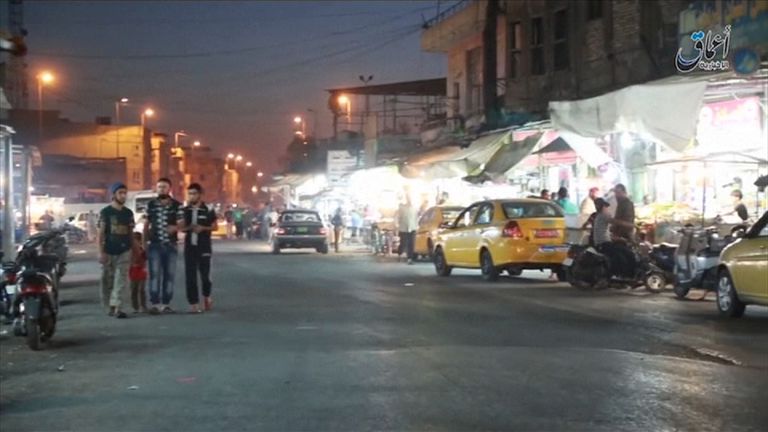The weapons Islamic State could use in the battle for Mosul
IS is outnumbered in Iraq's second largest city, but that does not mean the fight to reclaim it will be easy.
Tuesday 18 October 2016 19:53, UK
Islamic State is outnumbered and outgunned as Iraqi and Kurdish forces, with air support from the US-led coalition, attempt to retake Mosul.
Some 2,000 Iraqi special forces are being supported by four brigades of the regular Iraqi Army, 15,000 Sunni militia, 15,000 Kurdish Peshmerga and a few thousand Shia militia are moving towards Iraq's second city.
Somewhere between 3,000 and 8,000 IS fighters are said to be waiting for them - leader Abu Bakr al-Baghdadi and explosives expert Fawzi Ali Nouimeh among them, suggesting the group will stop at nothing to fend off any ground attack within the city limits.
Here's what the Iraqi and Kurdish forces are up against:
IEDs
There are concerns that Mosul has been littered with explosive devices and commanders on the ground have reported that the main roads and fields were booby-trapped.
General John Keane, former Vice Chief of Staff of the US Army, told Paste BN: "We don't know what they're going to do in Mosul but I suspect they have comprehensive mines and IEDs."
Suicide bombs
Kurdish Peshmerga came under attack from suspected suicide bombers from the opening day of the advance.
Sky's Stuart Ramsay was embedded with a unit which spotted one suspected bomber in a truck before they called in an airstrike to destroy the vehicle.
Islamic State media claims to have carried out numerous attacks in the first two days.
Chemical weapons
International aid groups have said they are preparing for the possible use of chemical weapons.
Robert Mardini, from the International Committee of the Red Cross's Near and Middle East division, has warned they "cannot exclude" their use.
He said the ICRC was training healthcare workers and providing equipment to health facilities around Mosul "that would be able to absorb the cases of people contaminated and offer decontamination".
Thomas Lothar Weiss, who heads the International Organization for Migration's (IOM) Iraq mission, also said he feared chemical weapons might be used and said gas masks were being prepared.
Human shields
There are believed to be up to 1.5m residents still living in Mosul and there a fears that huge numbers could be trapped and used as human shields by IS.
The IOM has warned the militant group may resort to holding tens of thousands of civilians against their will, and residents have said this is already happening.
"It is quite clear Daesh (Islamic State) has started to use civilians as human shields by allowing families to stay in buildings likely to be targeted by air strikes," said Abu Mahir, who lives near the city's university.
Tunnels
Kurdish Peshmerga fighters have discovered an underground tunnel network in Badana, in north east Iraq.
The town was liberated after Iraqi military and the country's Kurdish forces launched operations to the south and east of Mosul early on Monday.
IS is thought to have started building tunnels in the areas they have captured, enabling fighters to move without being seen from above - especially following the launch of an air campaign against them by the US-led coalition forces.
The tunnel network discovered in Badana showed the extremists managed to maintain supply lines and communication with other areas under their control until just a few days before Badana was freed.
Oil fires
Fighters set oil alight, throwing up thick, black smoke in an attempt to cover their movements and hide their positions from aircraft flying overhead.
Again, Sky has witnessed this firsthand, with our correspondent describing a scene of "burning oil everywhere that is cover for Islamic State as they try to move around".






